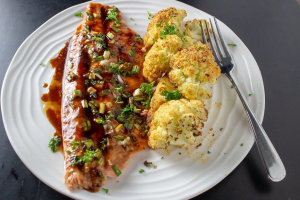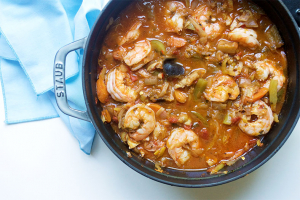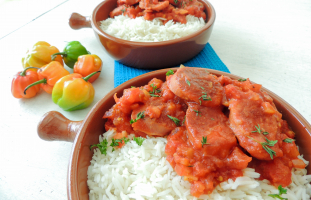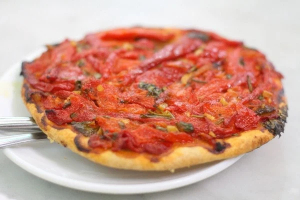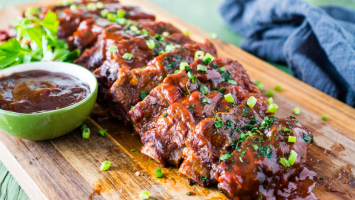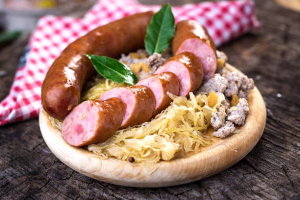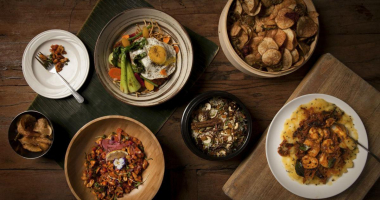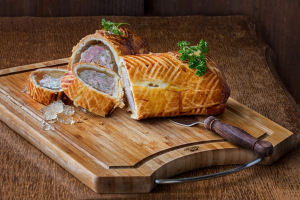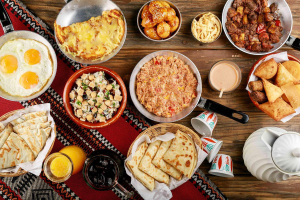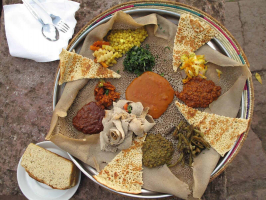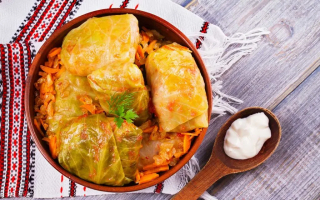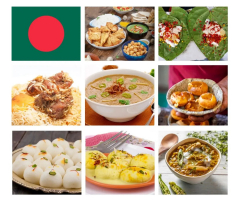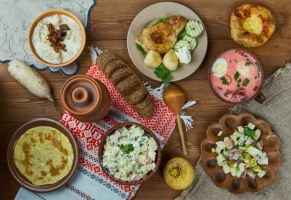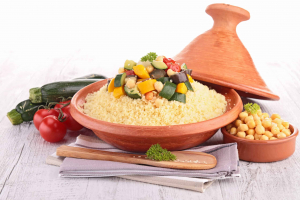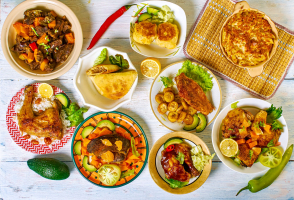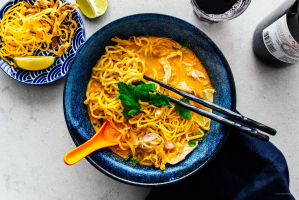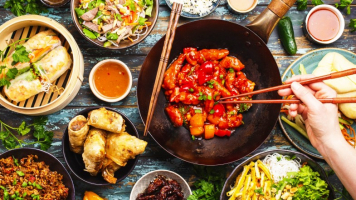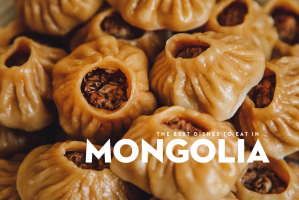Top 8 Best Foods in Slovakia - With Recipes
Slovakia is bordered by Hungary, Austria, the Czech Republic, Poland, and Ukraine. So that makes it an excellent location in Central Europe. Slovakia was once ... read more...a part of the Austro-Hungarian Empire before being merged with the Czech Republic to become Czechoslovakia. Many Slovak cuisines are also available in neighboring countries, but Slovaks have contributed their own unique flavor to their regional cuisine. While dumplings may be found in every Central European country, real bryndzové lucky can only be found in Slovakia. So, let's discover with Toplist delicious dishes in Slovakia!
-
Cabbage soup is a staple of every traditional Christmas dinner, but it may also be served as an appetizer before the main course any time of year.
Sauerkraut is combined with boiling potatoes, mushrooms, diced ham, paprika, black pepper, and garlic in a creamy base. The soup is served hot, and it is particularly satisfying when eaten with freshly made bread.
Ingredients:
Sauerkraut – 0,5 kg; Sausage – kabanos with garlic, 2 pieces (225 grams); One large onion; Garlic – 3 cloves; Clove, nutmeg, bay leaf, black pepper, spicy paprika, ½ red pepper
Instructions:
- Rinse the sauerkraut, then put it with a liter of water into a large pot.
- Cut and mix onion and garlic cloves, add to the soup.
- Add black pepper, cloves, nutmeg, 2 bay leaves, and some of the paprika.
- Add some more water and let it cook for about 15 minutes.
- Cut the sausages into small pieces and add them to the soup.
- Add red pepper and paprika
- Simmer for about 30 minutes.
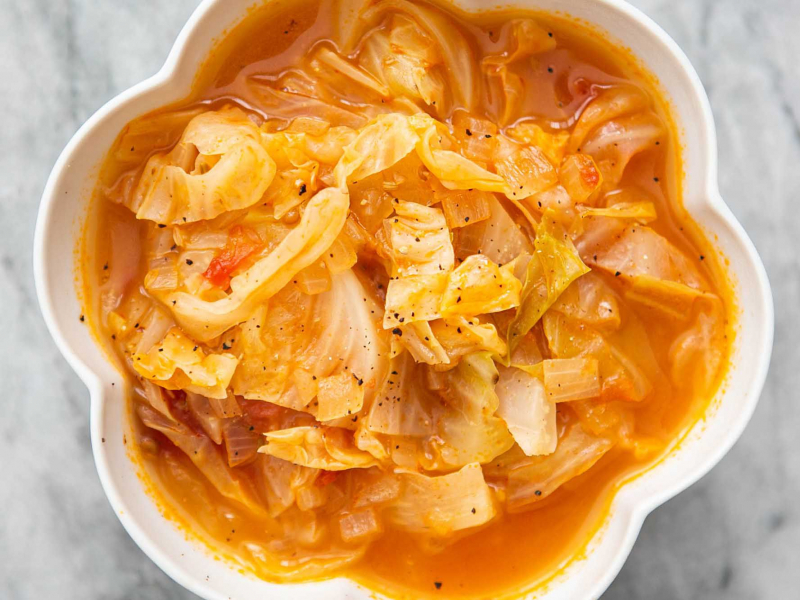
simplyreciepes.com 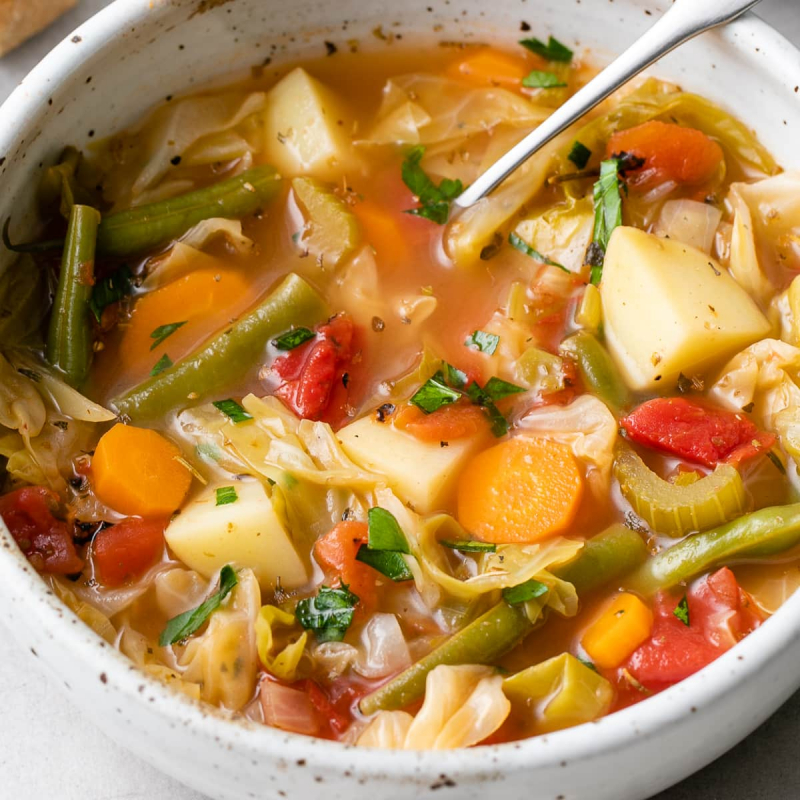
simple-vegenista.com -
This is Slovakia's national dish, so try it if you only have time to eat one Slovak meal. Bryndzové is a high-quality, creamy, soft, and locally manufactured sheep's cheese found only in Slovakia. Although this sort of cheese is made in neighboring nations as well, each has its own unique recipe, which the Slovaks are particularly proud of.
The cheese is served with haluky, or potato dumplings, which are akin to gnocchi in Italy. Finally, bits of smoked bacon and sausage can be sprinkled on top to make the greatest possible combination.
Ingredients:
3 medium potatoes to make approximately 2 cups when finely grated; the same amount of flour as potatoes (about 2 cups); 1tsp salt; 4 ounces or more bryndza; 1 or more strip of bacon per person
Instructions:
- Grate the potatoes, and add the flour, salt. You should get a goopy dough.
- Set a large pot of water to boil. When it has come to a boil, using a rubber spatula or board scraper (or the scraper that came with your halušky maker), quickly press the dough through the holes of the halušky maker/colander/grater into the water, scraping back and forth until all the dough has gone through. When the halušky float to the surface, in 2-3 minutes, they are ready. Drain, reserving ¼ cup of the cooking water.
- In a small bowl, add the cooking water to the bryndza and mix well. Add it to the halusky.
- Fry the bacon until the fat is rendered. Add some of the fat to the halušky and top them with the crumbled bacon.
- Enjoy
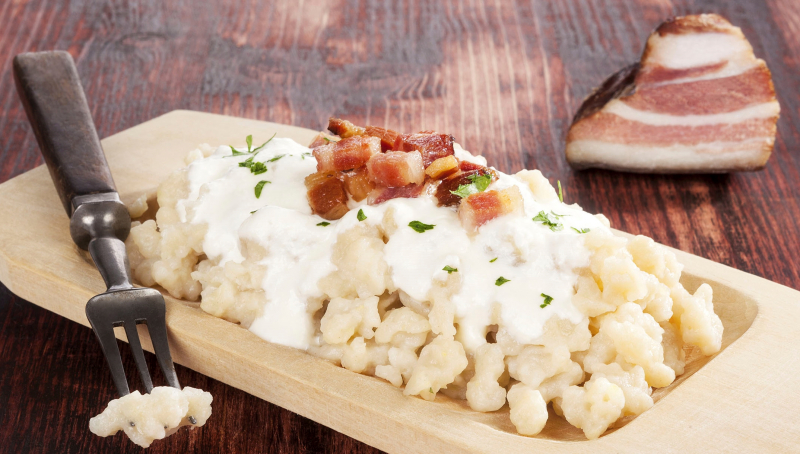
Megapixl.com 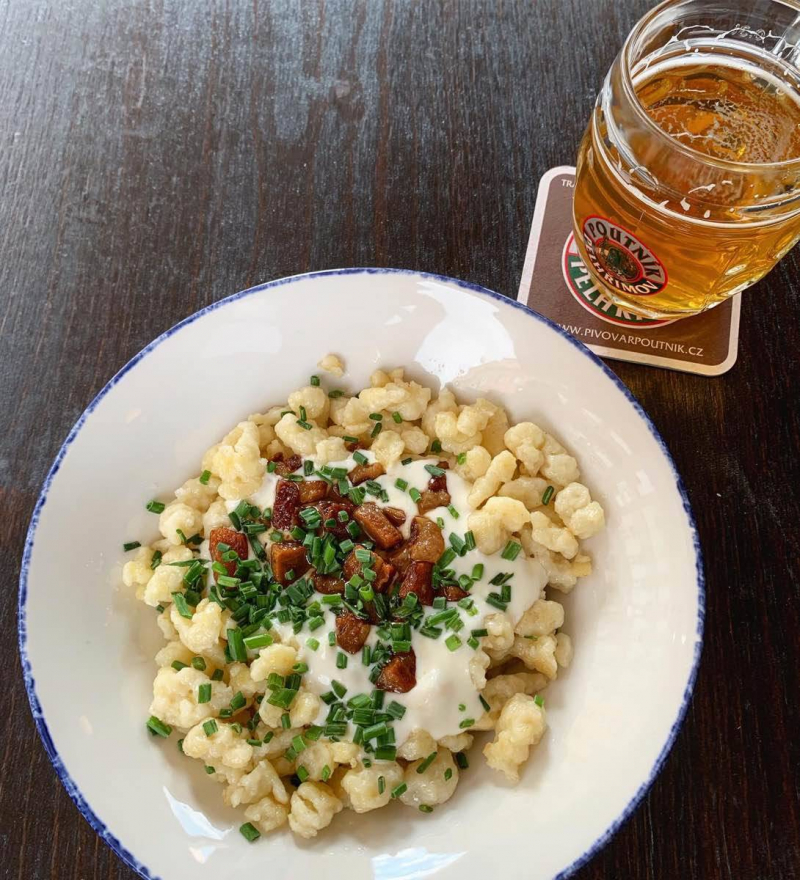
Source: SASKA -
Bryndza cheese reappears in Slovakia's version of the pierogi. These potato dumplings are stuffed with bryndza cheese, slathered with sour cream, and topped with strips of fried bacon. This meal is frequently served with a glass of inica, or sour sheep's milk. It's not for everyone because of the sour fermented flavor, but it's definitely worth a try!
Ingredients:
2 potatoes; 2 cups flour; one egg; salt; bacon; bryndza
Instructions:
- Start by cooking a few potatoes (zemiaky). Cook them until they are quite soft and mash them by hand. Add about a cup of flour (múka), one egg (vajce), and about a tablespoon of salt (soľ). Mix everything together by hand. Then add more flour until you get a fairly stiff mixture. Also, place a large pot full of salted water onto the stove.
- Form the dough into a loaf and place it onto a dusted board. Dust top with flour to prevent the pin from sticking. Roll out to an about 3 millimeters thick pancake.
- Then take a drinking glass and cut out circles. Do this by pushing down with the glass and twisting your wrist left and right a few times. The dough will come out with the glass. Top each circle with a teaspoon's worth of bryndza. If you don’t have bryndza, you can imitate it by mixing feta with sour cream.
- Fold the circle over and pinch the seal closed with the tip of your fingers. Then, to make the pyrohy look prettier, grab the seal between your fingers and twist about 60 degrees. Do this at a few spots.
- Place pierogi into the pot of boiling water. I found it really neat that Helka uses the same technique for transporting dumplings as my grandma – by placing them onto the backside of her arm. Right after placing them in water, scoop them up with a wooden spoon to keep them from sticking to the bottom. Pierogi are ready when they float to the top. Scoop them out using a large strainer.
- Bryndzové pirohy are topped with škvarky, fried bacon bits. Prepare these by cutting good thick smoked bacon into pieces about an inch long and frying them until the white fat part dissolves away. Top pierogi with a few spoonfuls of grease and then with the bacon bits. Finally, top with sour cream (kyslá smotana).
- Serve with a glass of žinčica, sour sheep milk which is a bit similar to kefir.
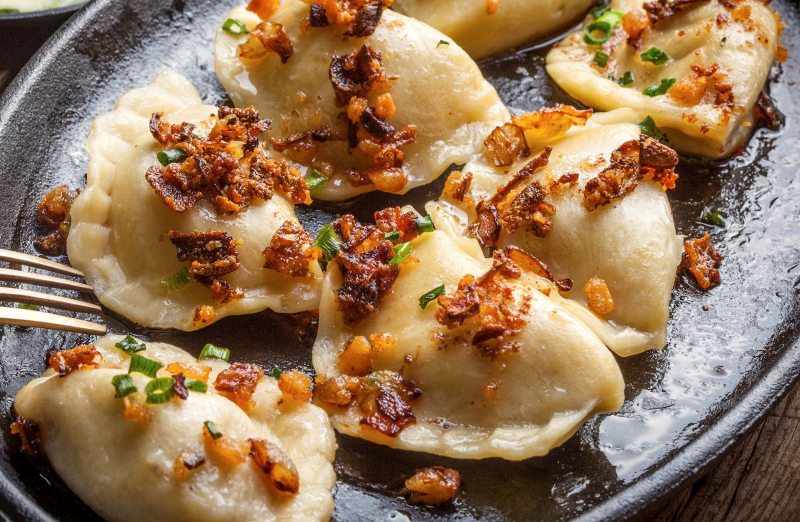
tasteatlas.com 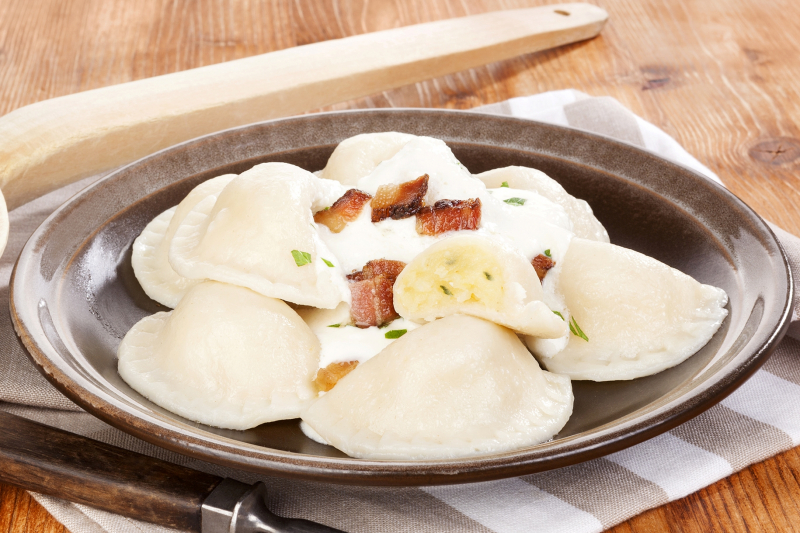
tasteatlas.com -
In the winter, funnel cakes are delicious served warm at a Christmas market with a glass of mulled wine. The sugar and cinnamon melt on your tongue sweetly, and the cake provides you the energy you need to go exploring for hours.
Slovaks, on the other hand, have lately altered the funnel cake to include a summer variant — one with vanilla ice cream filled within. This classic Slovak dessert is now available all year!
Ingredients:
4 cups all-purpose flour, sifted; ¾ cup milk, warm; 5 tablespoons butter, melted; 2 eggs, lightly beaten; 1 teaspoon active dry yeast; 2 tablespoons sugar; 1 teaspoon salt; Oil (for greasing trdlo sticks); Cinnamon; Sugar
Instructions:
- In a bowl, combine 2 tablespoons of sugar, milk, and yeast. Set aside for 10 minutes.
- In the bowl of a stand mixer, whisk together 2 egg yolks and butter.
- Add the flour, then the yeast mixture, and the salt.
- Combine and mix well. The dough will be quite dense.
- Form the dough into a ball, place it in the bowl, cover and let it rise in a warm place for about 1 hour, or until it almost doubles in volume.
- Meanwhile, roll magazines into a stick and secure them with cooking twine or scotch tape. Tightly cover each stick with aluminum foil and tuck the edges on each side of the magazine.
- Preheat the oven to 380F/190C (ideally convection mode).
- On a lightly floured surface, roll the dough to approximately ⅛ inch (3mm) thickness. Using a small knife, cut ½ inch (1cm) thick strips (at least 8 inches/20cm long).
- Grease each to stick by spraying oil on them. Tightly wrap each strip of dough around the sticks making sure each strip slightly overlaps the other. Each stick should fit about 3 trdelnik pastries, leaving about 1 inch between them.
- Combine cinnamon and sugar (to taste) on a large baking sheet.
- Brush each trdelnik with egg white and generously coat with the cinnamon sugar.
- Place the trdlo sticks on a baking dish making sure the pastry doesn’t touch the bottom or the sides of the dish.
- Bake the trdelnik for 20 minutes until they are golden all around.
- Carefully slide off the trdelnik from the sticks.
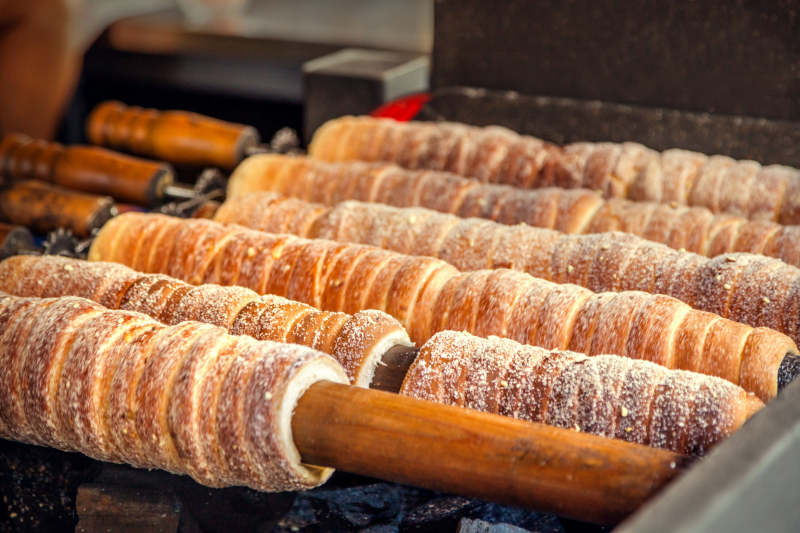
itinari.com 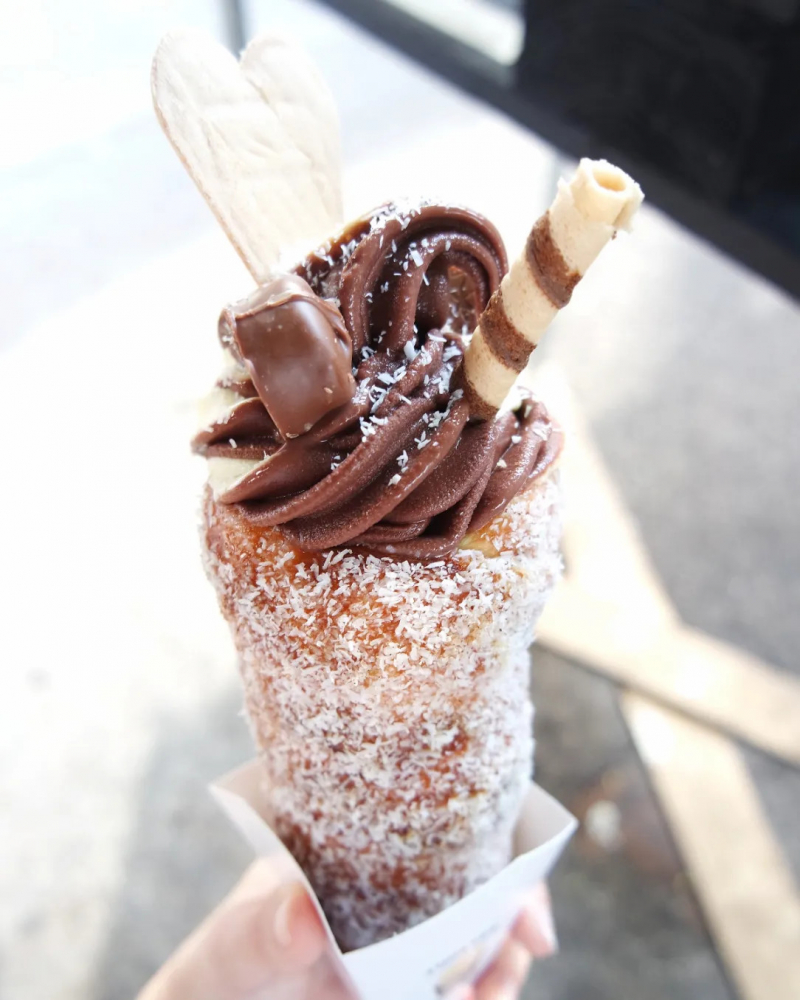
EatBakeFit -
Slovenske palacinky are thin crêpes filled with many delectable fillings. When served warm and topped with homemade apricot jam, they melt in your mouth. Other common toppings include strawberry jam, hazelnut spread, powdered sugar, and cinnamon. It's the ideal way to round out dinner.
Ingredients:
(for ~ 10 Pancakes)
2 eggs, whole; 250g milk; 100g water; 150g flour; 20g sugar; 10g oil; 5g salt
Instructions:
- In a mixing bowl whisk together 2 whole Eggs with 20g (~ 2 Tablespoons) of Sugar and 5g (~ 1 Teaspoon) of Salt until frothy, light, and pale in color
- Pour in 250g of Hot Milk and keep whisking for another minute
- Add ~ 150g of Flour (all at once) and whisk until smooth. Add 150g of lukewarm water and 10g of neutral-tasting Oil like canola or sunflower oil and whisk until fully incorporated. Let the mixture sit in the bowl for 5 minutes
- Heat up a non-stick pan for at least 5 minutes until really hot. Grease with a tiny bit of butter and pour a scoop of the well-mixed batter onto the pan. Tilt the pan to spread the batter evenly on the whole pan surface creating a thin pancake layer. Cook until golden brown, then flip and cook the other side. Repeat with all the batter then fill your warm pancakes with your favorite filling and enjoy
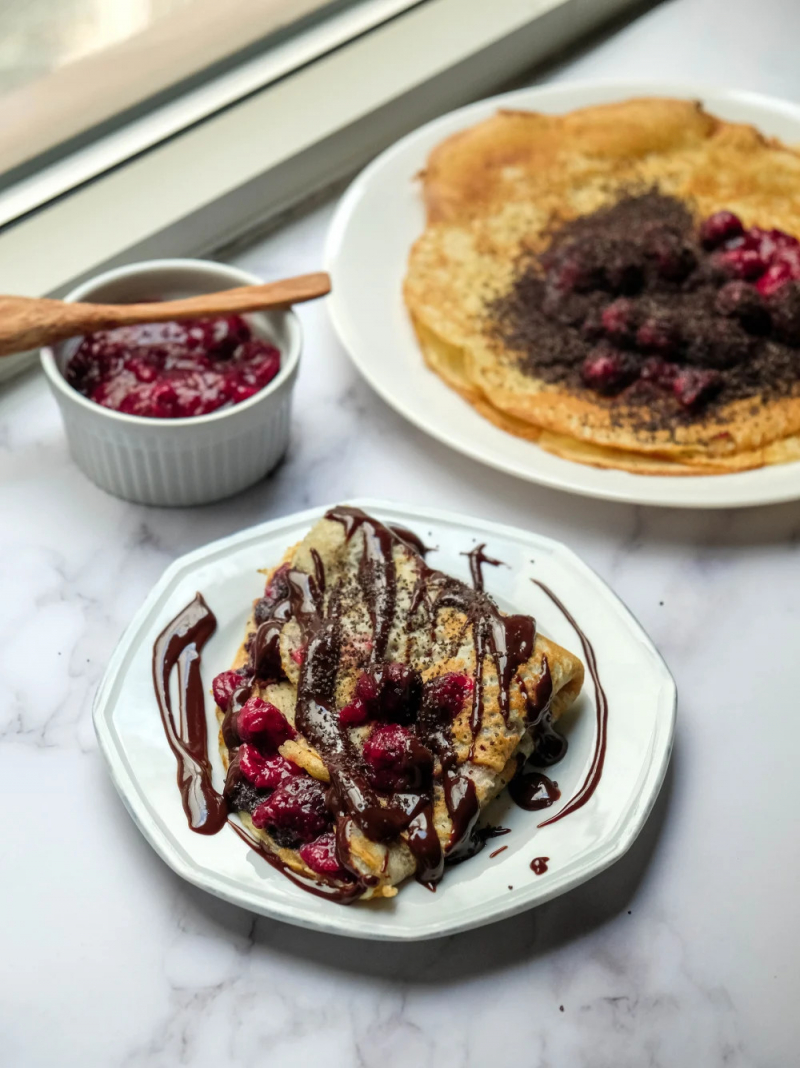
Source: Lenkagengel 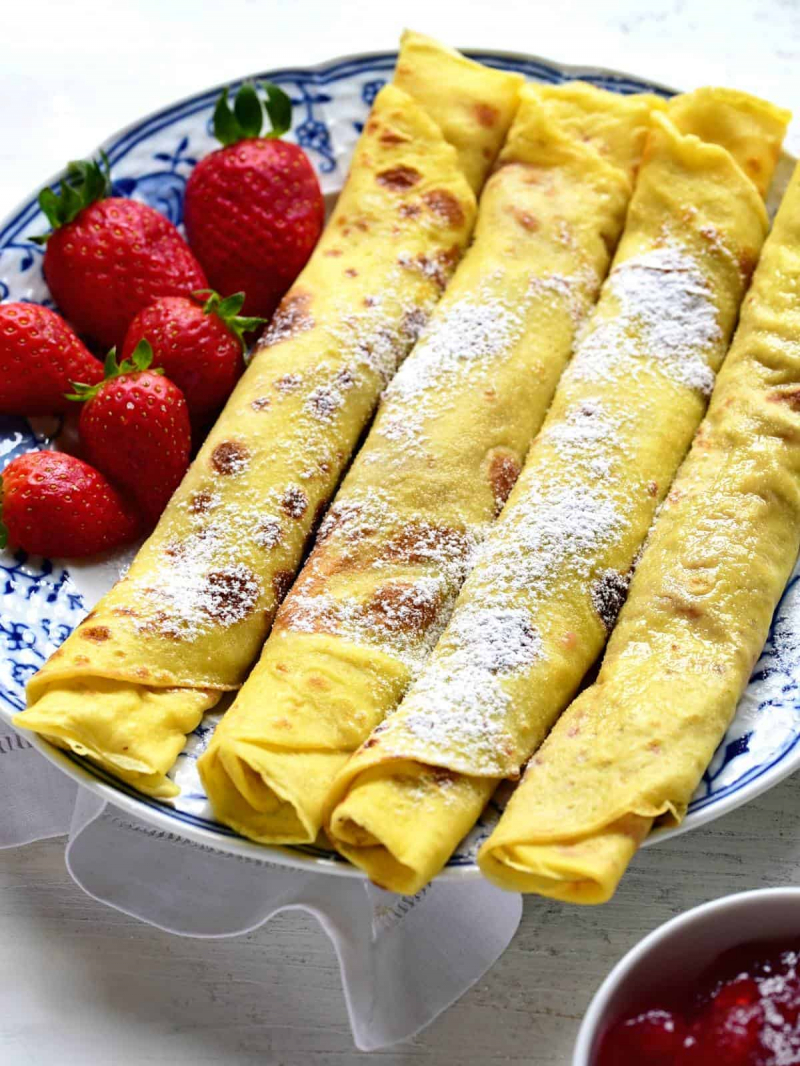
cooklikeczechs.com -
Almost every restaurant, much as in Austria, will have a variety of schnitzel on the menu. A thin slice of pork is tenderized before being breaded and fried. As a side dish, mayonnaise-based potato salad is popular. Order baovsk reze, which is schnitzel covered with ham and melted cheese, if you want to take your schnitzel to the next level.
Ingredients:
300 g boneless pork neck; salt; plain flour; 100 ml milk; breadcrumbs; 200 g pork ointment; 1 pc lemon; 300 g potatoes
Instructions:
- Cut the washed neck into schnitzels, cut several times around the perimeter so that it does not collapse when frying. Tap the schnitzels on both sides to a thickness of about 0.5 cm.
- We wrap on both sides in flour.
- Whisk the egg salt and add the milk. We wrap the schnitzels in the mixture thus prepared.
- Then we wrap the schnitzels in breadcrumbs and push the breadcrumbs thoroughly into them.
- We put the schnitzel in the hot ointment and slowly fry from each side for about 7-8 minutes under the lid. Such an indicative sign to turn the schnitzel is the moment when it pinks nicely on the edges. The schnitzels should be inserted into the maximum hot fat.
- Fry until crispy in a golden-brown-red color.
- serve with new potatoes in butter with parsley and vegetable garnish.
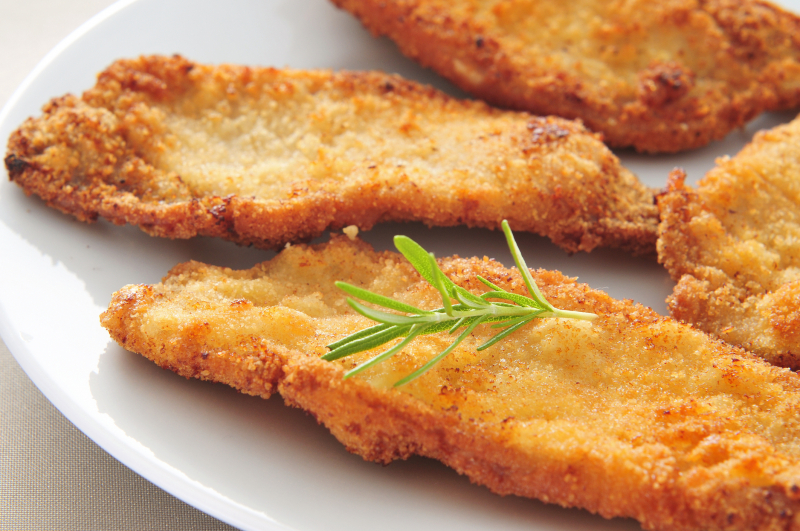
slovakcooking.com 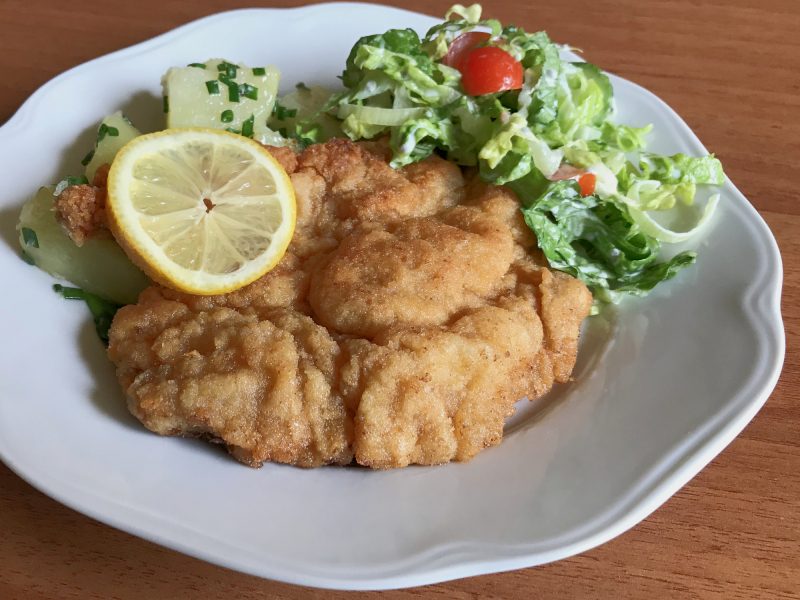
tripadvisor.com -
Another cuisine that is altered in a number of ways in several Central and Eastern European nations is Polievka. Beef, onions, potatoes, peppers, tomatoes, garlic, and a spice blend are typical ingredients in Slovakia. This dish is frequently served at sporting events and is typically prepared in a cauldron over an open fire. Goulash soup can be found adjacent to the tennis courts at a tournament or at the finish line of a 5K race. As the soup simmer for many hours, the enticing aroma draws you in.
Ingredients:
Ground beef; Onion; Potatoes; All-purpose flour; Beef broth; Garlic; Lard; Sweet ground paprika; Dried marjoram; Caraway seeds; Black pepper; Salt
Instructions:
- Peel and finely chop the onion. Please do the same with the garlic cloves: peel and finely chop them. Crush the caraway seeds coarsely in an electric grinder or by hand in a mortar. Salt, pepper, and mix the ground beef. Peel potatoes and slice them into 1-inch (2.5 cm) cubes.
- In a heavy-bottomed soup pot or dutch oven, melt lard or vegetable oil over medium heat. Add chopped onion and sauté while stirring until light brown.
- Add the caraway seeds and the ground meat. Stir and sauté until all the juices that the meat has released have evaporated. Slightly turn up the heat to speed up the process. Stir frequently.
- Add the flour to the meat. Reduce the heat to a third, and fry the flour with the meat for one minute, stirring constantly.
- Add the chopped garlic and sweet ground paprika, mix thoroughly and pour in the broth.
- Stir, season with salt and pepper, and bring to a boil. Reduce heat to a minimum.
- Add potato cubes to the soup together with the dried marjoram.
- Cook the soup over low heat for 15-20 minutes or until the potatoes are soft. Stir the soup occasionally so that it does not stick to the bottom. Salt and pepper the finished soup to your liking.
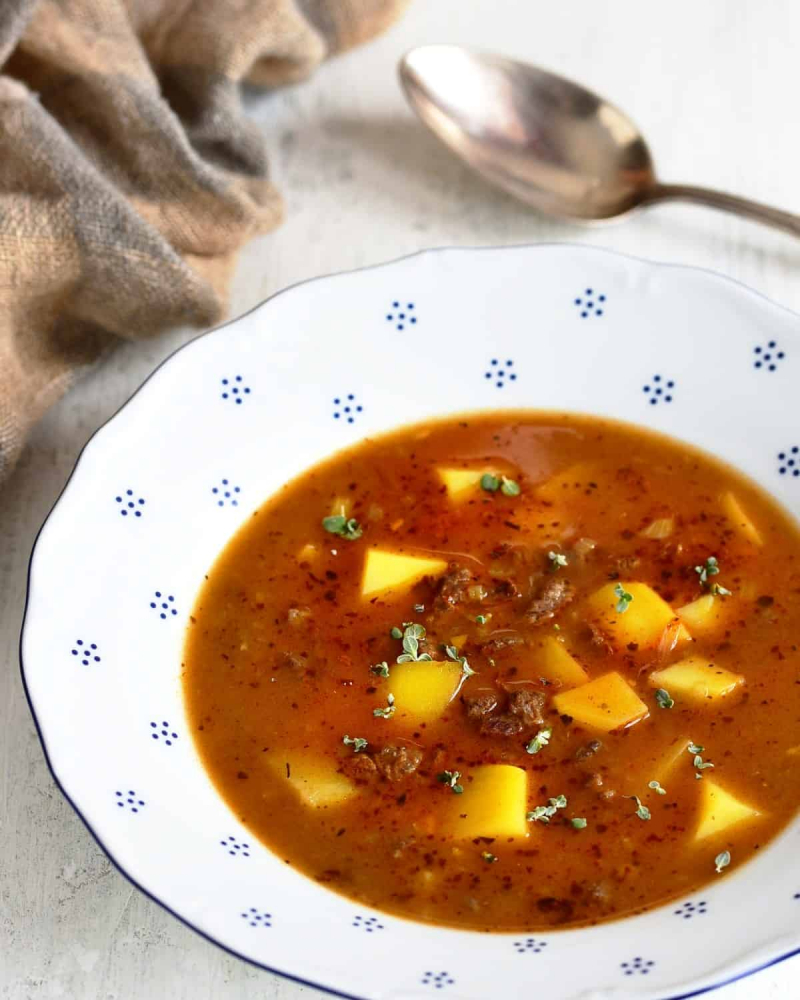
cooklikeczechs.com 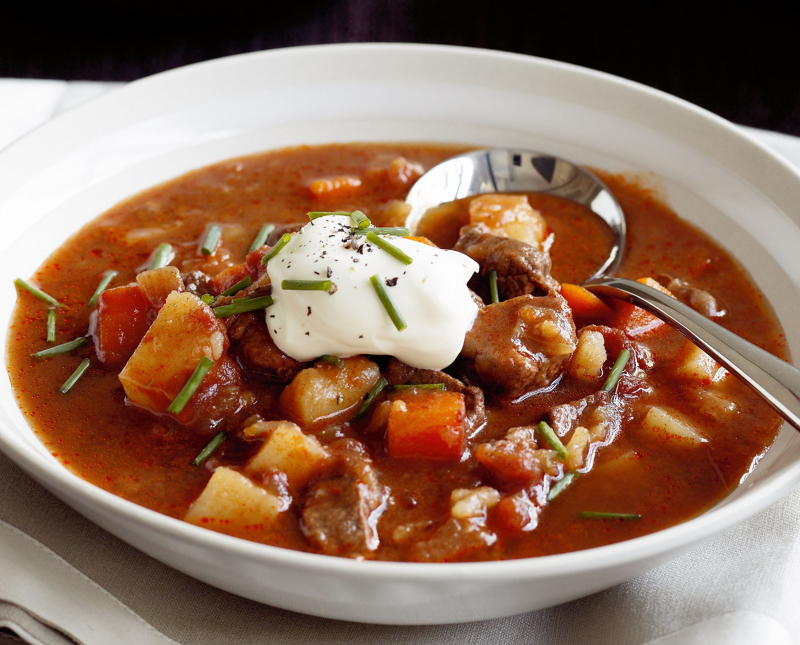
Source: Taste -
Laskonky are a type of Slovak and Czech cookie made out of two crispy meringues and a variety of buttercream fillings. Meringues are often baked into thin, oval forms and may contain ground walnuts or coconut. Caramel buttercream is traditionally used as a filling, however many modern versions include coffee or chocolate.
Many traditional Slovak and Czech pastry shops stock these crunchy sweet delicacies. They're typically served as a dessert with a cup of hot coffee or tea.
Ingredients:
- Praline paste: 175g Walnuts Alesto; 125g Castello crystal sugar; 1 tsp sunflower oil Vita D'or
- Laskonky: 180 g protein; 320g Castello crystal sugar; 100g Castello icing sugar; 180 g minced Walnuts Alesto
- Cream: 250 ml Pilos milk; 40g Castello crystal sugar; 1 egg; 1 yolk; 15g Golden Cob; 15g Plain Castello Flour; 190g Pilos butter
Instructions:
- Praline paste: Bake the nuts on a baking tray lined with baking paper at 180 °C for about 8 minutes until golden brown. Let the sugar caramelize. Add the nuts, mix and pour the mixture back on a baking tray of paper. Once cool, blend half of the wrapped nuts into a grill and the remaining half to a smooth paste.
- Laskonky: Whisk the whites together with the crystal sugar in a water bath until the sugar is completely dissolved. Then, in a blender, still warm at the highest speeds, whisk them to solid snow. Gradually whisk in the icing sugar and ground walnuts. Using a lascon mould, apply the mixture to a baking tray lined with baking paper. We align with the spatula. Carefully lift the mold so that sharp edges remain on the lasagna. We wash the mold and repeat the process on other sheets. Bake the lasagna at 120 °C for about 15 minutes, then reduce the temperature to 80 °C and dry the lasagna for about 30 minutes. Laskonkas are baked when they go easy to peel off from the baking paper.
- Cream: We put the milk to cook with half the sugar. In a bowl with a hand whisk, mix the remaining sugar, egg, yolk, golden cob, and flour. Pour the egg mixture over the boiling milk and, stirring constantly, cook the thick pudding. Pour the cooked pudding into a bowl, cover with foil and leave to cool. Then stir the stiff custard cream until smooth. Whisk the butter into the mousse and gradually whisk the paste and pudding into it a little bit. Finally, stir in the grill. We transfer the cream to a pastry bag with a decorative tip and glue the prepared lasagna with it.
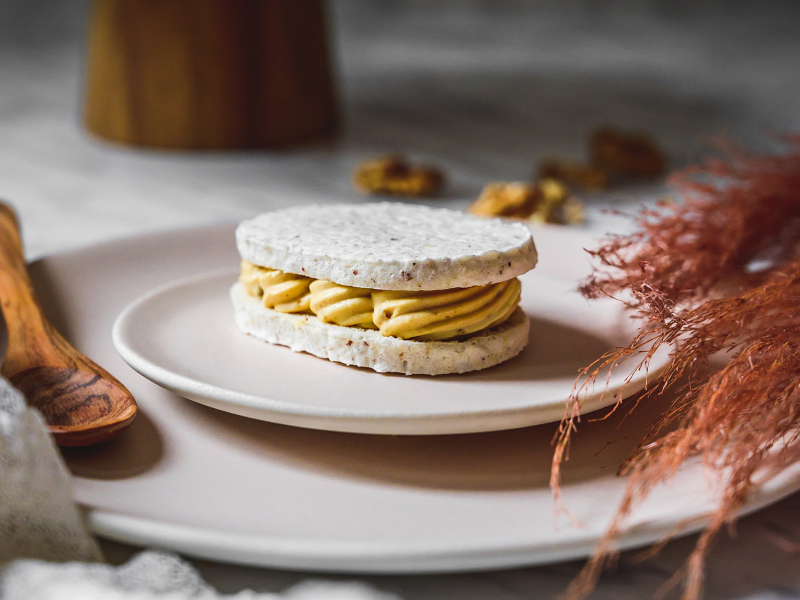
catandcook.cz 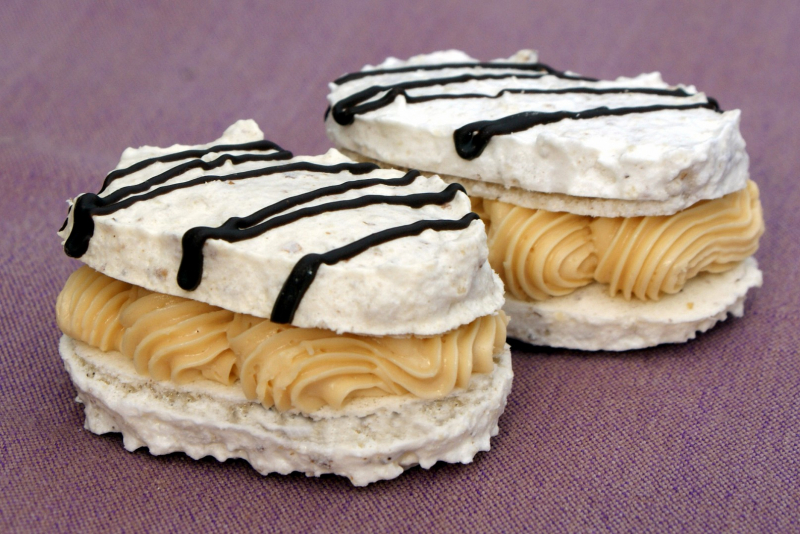
toprecepty.cz










